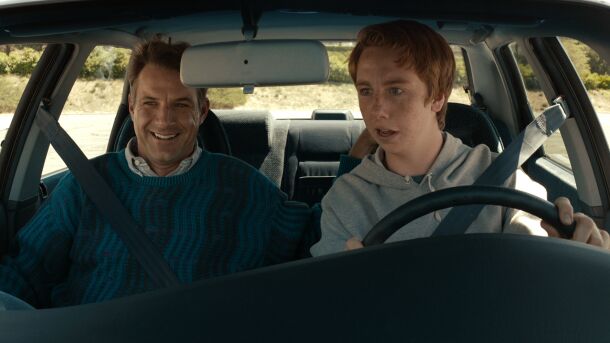Fearful Drivers Are the Greatest Ignored Danger on the Road

Drivers afraid to be behind the wheel are a misunderstood threat to road safety. Fearful driving often leads to excessive caution masquerading as politeness. Resulting behaviors may appear benign, when in fact they can be grave.
For example, arriving first at a four-way stop but waving others through creates confusion for other road users. Cynthia Lewellen, an Oregon cyclist, was hit by a motorist last year after a well-intentioned driver waved Juan Carlos Garcia through an intersection in advance of the appropriate right-first sequence. The approbative driver may not have been acting out of the timidity of fear, but the point is in the danger of this driver’s behavior. Garcia’s F-250 struck Lewellen fracturing her pelvis, shoulder, ribs, sacrum, and tailbone.
Ill advised signaling, poor lane choice, and misplaced courtesy put other motorists and pedestrians at risk. Psychologists have long understood the challenge posed by a fear of driving, which at the extreme can be exhibited as panic attacks and freezing. Fearful drivers also demonstrate less catastrophic symptoms, such as confusion and disorientation. The American Psychiatric Association’s Diagnostic and Statistical Manual of Mental Disorders (DSM) codifies driving disorders; specifically, Diagnostic Code 300.29, Specific Phobia, Driving Type. Mental health specialists have gone further by defining a variety of driving related phobias – vehophobia, amaxophobia, hamaxophobia, ochophobia, dystychiphobia, and motorphobia.
As with most psychological conditions, people experience driving-related phobias on a spectrum. The most egregiously afflicted rarely take to the road, whereas those with less severe phobic traits drive daily. Some fearful drivers seek help and there are effective therapies. Multiple self-help books have been published on the topic. The most significant danger to road safety is from the millions of daily drivers on the phobic spectrum. These people either do not recognize their condition or do not believe their anxiety is a danger to others.
A variety of factors can contribute to a fear of driving. A traumatizing incident can be a trigger, as can growing up in an auto-free environment. Here is how one fearful driver expressed her experience.
“I just cannot handle how much power I have to literally kill someone at a moment’s notice when I’m in the car. Not because I’m some sort of Dexter-style psychopath … My body is tense. My brain is confused. I don’t trust myself that I’m good at this. I can convince myself into doing it, but it doesn’t ever seem like it could be second nature like it is for some people,” said Kate Dries, Managing Editor at Gawker Media, in 2013.
The remedy is not entirely clear, but a measure of tolerance, patience, and distance among other drivers would be healthy (I’m pointing a finger at myself here).
But what are the National Highway Traffic Safety Administration (NHTSA) and Insurance Institute for highway Safety (IIHS) doing about fearful driving?
Nothing.
Fearful driving is not acknowledged as a causal factor in traffic accidents. In 2008, the NHTSA delivered the National Motor Vehicle Crash Causation Survey to Congress. The exhaustive three-year study sampled 5,471 light vehicles crashes nationwide, with a focus on the factors related to pre-crash events. More than 600 data points were collected for each crash capturing driver, vehicle, roadway, and environmental conditions. The report attributed 33 percent of driver-related critical reasons for accidents to decision errors. A decision error is a catch-all category including false assumptions of others’ actions, illegal maneuvers, misjudgment of gap and speed, etc. Some of these decision errors are likely the result of fearful, timid, anxious driving. However, there is no mention of fear or phobia within the report’s 47 pages. Panic is discussed as a pre-crash performance attribute, but not as a causal factor.
The Auto Insurance Center, an independent news and information source for consumers, conducted a study using NHTSA data. It found that between 2009 and 2013 the second most common accident inducing behavior on American roads was failing to yield the right-of-way. They make no mention of fear, but other top-ten causes included failure to keep in proper lane, over correction, and improper turns. All drivers are capable of these mistakes, but fearful driving exacerbates poor decision making and contributes to dangerous behaviors. The mainstream mental health community has identified the danger of fearful driving and developed therapies. The road safety establishment has yet to acknowledge the danger.
Traveling by car has become dramatically safer. Over the last five decades, proper lighting, collapsible steering wheels, anti-lock brakes, and other advances have helped steadily reduce deaths per million miles traveled. Additional improvements such as lane-departure warning and automated braking systems will continue to reduce the threat drivers pose. And other high-profile dangers remain, such as in-car distraction, fatigue, and substance abuse. However, the presence of other legitimate risk factors along with ever-improving vehicle safety do not mean the risk of fearful driving should be dismissed. The driving environment is becoming more dense and complex, elevating anxiety among those already fearful when taking the wheel. The road safety establishment needs to study and address fearful driving as a legitimate factor in traffic safety.
The 2008 NHTSA study determined that 94 percent of accidents are caused by drivers. Other studies have reached similar conclusions – people cause car accidents. Fearful drivers do not respond well amid confident, decisive drivers and are part of the road safety equation. They are the greatest ignored danger on the road today.

Twenty year auto industry professional. Currently CEO at Turbo International, the premier American manufacturer of OEM replacement turbochargers for the global aftermarket.
More by Seth Parks
Latest Car Reviews
Read moreLatest Product Reviews
Read moreRecent Comments
- Analoggrotto I hope the walls of Mary Barra's office are covered in crushed velvet.
- Mikey For 36.4 years i punched the clock at GM Canada.. For the last 15.5 years (frozen at 2008 rates) my GM pension shows up in my account. I flirted with Fords for a couple of years but these days I'm back to GM vehicles and still qualify for employee price. Speaking as a High School drop out ..GM provided myself and family a middle class lifestyle.. And still does .. Sorry if i don't join in to the ever present TTAC ..GM Bash fest
- Akear Does anyone care how the world's sixth largest carmaker conducts business. Just a quarter century ago GM was the world's top carmaker. [list=1][*]Toyota Group: Sold 10.8 million vehicles, with a growth rate of 4.6%.[/*][*]Volkswagen Group: Achieved 8.8 million sales, growing sharply in America (+16.6%) and Europe (+20.3%).[/*][*]Hyundai-Kia: Reported 7.1 million sales, with surges in America (+7.9%) and Asia (+6.3%).[/*][*]Renault Nissan Alliance: Accumulated 6.9 million sales, balancing struggles in Asia and Africa with growth in the Americas and Europe.[/*][*]Stellantis: Maintained the fifth position with 6.5 million sales, despite substantial losses in Asia.[/*][*]General Motors, Honda Motor, and Ford followed closely with 6.2 million, 4.1 million, and 3.9 million sales, respectively.[/*][/list=1]
- THX1136 A Mr. J. Sangburg, professional manicurist, rust repairer and 3 times survivor is hoping to get in on the bottom level of this magnificent property. He has designs to open a tea shop and used auto parts store in the facility as soon as there is affordable space available. He has stated, for the record, "You ain't seen anything yet and you probably won't." Always one for understatement, Mr. Sangburg hasn't been forthcoming with any more information at this time. You can follow the any further developments @GotItFiguredOut.net.
- TheEndlessEnigma And yet government continues to grow....


































Comments
Join the conversation
All the 4-way stop issues would be resolved if you north americans could figure out roundabouts, 4-way stops are such an infuriating way of policing an intersection. If you ABSOLUTELY MUST have a 4-way stop, then you need to get rid of the stupidest rule i have ever seen, the whole "yield to the person at the intersection first" thing. It's an abomination, confuses people to no end and causes more problems than it solves. They should all be replaces by yielding to your left, it's that simple, or better yet .. roundabouts!!
Just do what many cities in Europe are doing. Eliminate traffic lights and signs. Traffic, amazingly, self regulates. So far the results have been better traffic flow and fewer accidents. Rather than post one link, just google "cities eliminate traffic signs" and read about it.